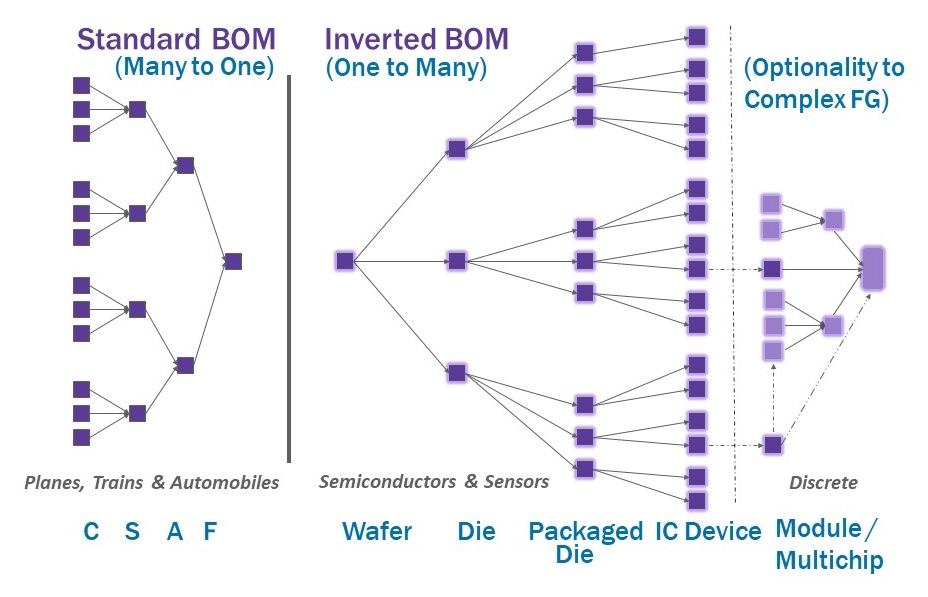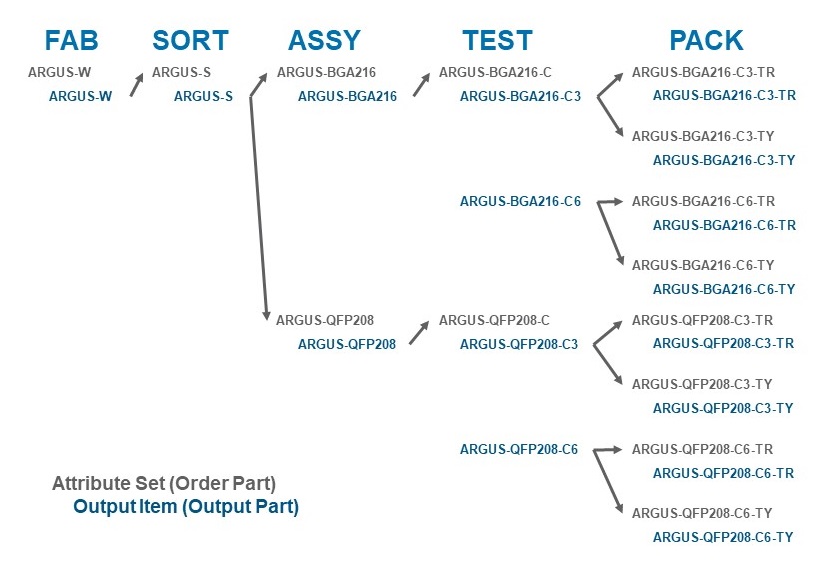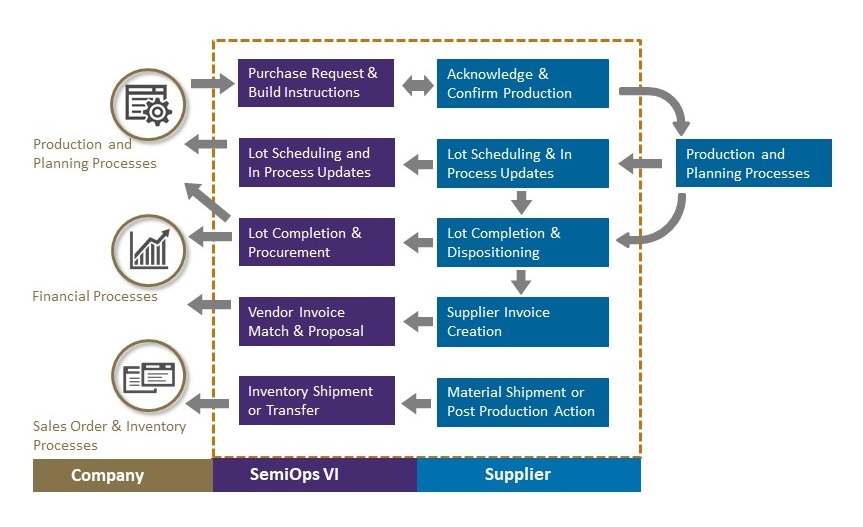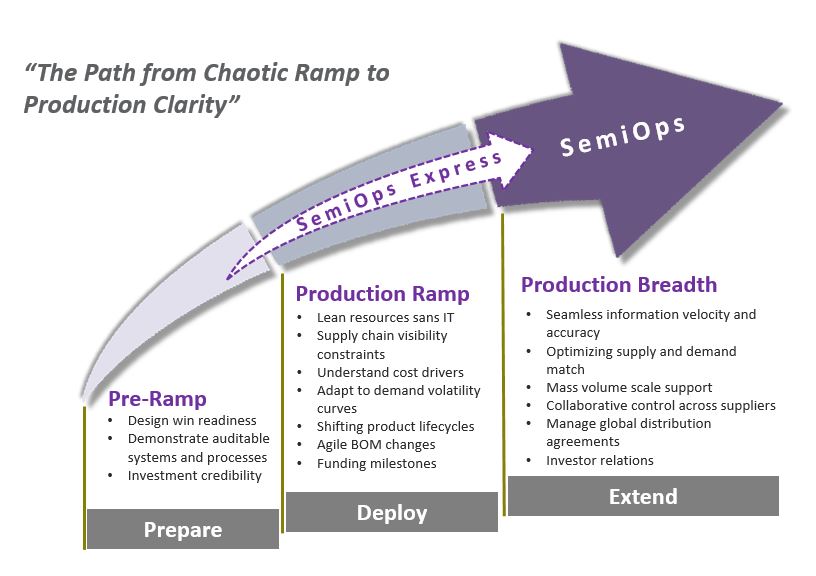What is It? And How Does It Differ From Popular “One-size-fits-all” Cloud ERP Systems?

If you’re looking for information about how to manage your company’s semiconductor manufacturing process using commercially available software, you’re in the right place. As you may have already discovered, most systems are just not a good fit for the task. And, while you’re undoubtedly an expert in your field, how often have you had to select an MRP or ERP system during your career? While that may not happen often, you will want to get right, and on the first try.
This guide will clarify why it’s so difficult to find a system to meet your operational needs. It will look at the unique processes in semiconductor manufacturing, as well as the challenges of the semiconductor supply chain, costing methods, and the phases of a typical production ramp in the semiconductor industry.
A note about nomenclature: You’ll notice that the terms “MRP” and “ERP” are used inter-changeably. Technically, the unique system needs of the fabless semiconductor industry fall under what is generally understood to be MRP functionality – operations and manufacturing capabilities. Adding accounting and financial functionality to MRP gives you ERP, which has been the most popular route for many companies in recent years. However, it should be noted that – other than product costing – the core accounting and finance needs of the semiconductor industry are standard for many other industries. So, this guide focuses on fabless semiconductor MRP, since that is where the unique requirements are.
To learn what to look for when you’re searching for a fabless semiconductor MRP (or ERP) solution for your organization, read on below.
Chapter 1: What is so Unique about Semiconductor Manufacturing?
Unlike other manufacturing processes, semiconductor manufacturing is a hybrid of process manufacturing and discrete manufacturing. It adds value to the flow of materials throughout the process and can have multiple outcomes at various stages of production. In most cases, a standard ERP system does not meet the needs that result from this process.
This blog post provides an in-depth understanding of process manufacturing in semiconductor industry – from a systems perspective – with an example.

Chapter 2: What is Supply Chain Optimization?
The end goal of supply chain optimization is to optimize revenue and/or product margin. In the semiconductor industry, this requires a thorough understanding of the end-to end supply chain cycle, through each production location.
Read this blog post to get an overview of the semiconductor value chain, with an example.

Chapter 3: How to Choose the Best Costing Method in Semiconductor Industry
The actual costing method offers a passive approach for handling inventory costs, as opposed to the active approach of standard costing. Although it takes time and effort to set up, standard costing is the preferable method for fabless semiconductor industry. Its active approach deals with the complexities of semiconductor industry more easily, and allows companies to manage costs and support cost and yield planning per unit with each vendor, yield, and cost allocation.
To understand how actual and standard costs compare to one another, read this blog post.
![]()
Chapter 4: What is the Right ERP System for Fabless Semiconductor Companies?
In this blog post, Ron Jones, CEO and founder of N-Able Group International, shares his insight into what fabless semiconductor companies need from an ERP system. Jones chaired the Business Management Systems Committee for the FSA, before it became the GSA (Global Semiconductor Alliance). During his career, he advised numerous fabless semiconductor companies and presented frequently at FSA Forums.

Chapter 5: Three Phases in the Life of a Semiconductor Company
Typically, semiconductor (fabless/traditional), chip, sensor and module companies go through three-phase growth life cycle: pre-ramp, production ramp and production breadth. The illustration below depicts what companies can expect at each of these stages as they navigate their path from chaotic ramp to production clarity.
To learn some of the most important best practices for managing a semiconductor company’s lifecycle at each growth phase, read this blog post.

Need more information?
Semiconductor operations and planning are complex, so it is not surprising that fabless semiconductor MRP is complex as well. We hope this guide lays the groundwork for a better understanding of fabless semiconductor MRP, and answers some of your questions.
For additional information, you can browse our blog posts, or use the “search” box on the blog page to look for specific topics. You can also sign up for our newsletter to be notified our upcoming events or new content.
Finally, if you have questions or need help that you cannot find here, please do not hesitate to reach out to us. We would be happy to help!